iPhone 14 vs. Samsung Galaxy S22: Which should you buy?
When it comes to these smartphone competitors, which flagship is the best?
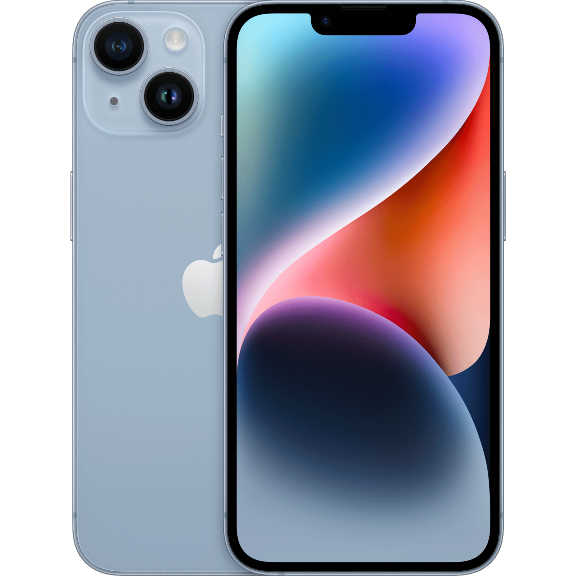
Sustained brilliance
Apple's 2022 flagship iPhone model keeps last year's chip but delivers performance where it counts.
For
- Great color options
- Reasonable price for hardware on offer
- Improved camera system
- SOS emergency calling
Against
- Year-old A15 Bionic chip
- Only a Dual Camera system
- Screen is more prone to scratches
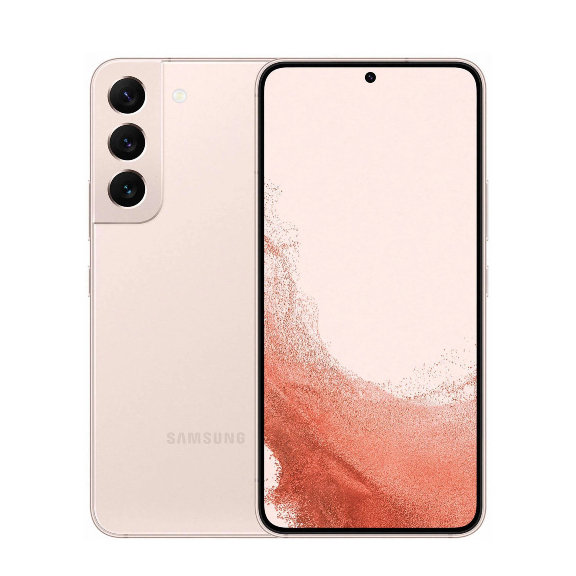
Reigning Android champion
Now replaced, Samsungs previous flagship just keeps the edge over the iPhone 14 with a superior screen and software versatility.
For
- Higher refresh rate
- Better display
- Offers optical zoom and 8K video
- More RAM
Against
- Lower battery life
- Slower processor
- Screen is more prone to cracks
The iPhone 14 and the Samsung Galaxy S22 are two of the biggest handsets vying for your hard-earned cash. Maybe not the biggest in terms of screen size, but in almost every other metric these are two smartphones that sit closest to the top of the tree for affordability and performance for both companies. But which is best? One may be slightly more powerful on paper, while the other offers a better camera experience. There are some big differences between these two phones as well, but are they enough to push one clearly above the other? Let's put them head to head to find out.
iPhone 14 vs. Galaxy S22: Specifications
Specifications sheets don't automatically make a good product, but when it comes down to it, comparing the specifications can help make a choice. Here are how the two devices stack up next to each other.
| Header Cell - Column 0 | iPhone 14 | Galaxy S22 |
|---|---|---|
| Design | Ceramic Shield front + Glass back and aluminum frame | Corning Gorilla Glass Victus+ front and back, aluminum frame |
| Colors | Midnight, Blue, Starlight, Purple, and (PRODUCT)RED | Phantom Black, Phantom White, Green, Pink Gold |
| Display | 6.1‑inch OLED display, 60Hz refresh rate | 6.1-inch Amoled 2X display, 120Hz refresh rate |
| Processor | A15 Bionic | Snapdragon 8 Gen 1 |
| Camera | Dual lens 12-megapixel wide and 12MP ultra-wide rear, 12MP TrueDepth front | Triple lens 50MP main camera, 12MP ultra-wide, and 10MP telephoto lens |
| Storage | 128GB, 256GB, 512GB + 4GB RAM | 128GB, 256GB + 8GB RAM |
| Battery | Fast charging (20W charger sold separately), Qi wireless charging | 3,700mAh, Fast charging (charger sold separately), Qi wireless charging |
| IP rating | IP68 | IP68 |
| Headphone jack | None | None |
| Size and weight | 5.78x2.82x0.31 inches, 172 g | 5.75x2.78x0.30 inches, 167 g |
| Software | iOS 16 | Android 12 |
On paper, the iPhone 14 and Galaxy S22 stack up quite nicely. The two phones are very similar, featuring glass-sandwiched aluminum bodies. The iPhone 14 claims to feature improved camera sensors over the iPhone 13, but the Samsung Galaxy S22 has the beefier camera with a 50MP main camera. It even has a telephoto lens which the iPhone 14 misses. The processor comparison is interesting this year because the iPhone 14 is using last year's A15 Bionic chipset, although it is the 5-core GPU version that we saw in the iPhone 13 Pro. Regardless, it still has an advantage over the Snapdragon 8 Gen 1 found in the S22. The two phones seem balanced against each other, but there are things to pay attention to.
iPhone 14 vs. Galaxy S22 Design: Pick your poison
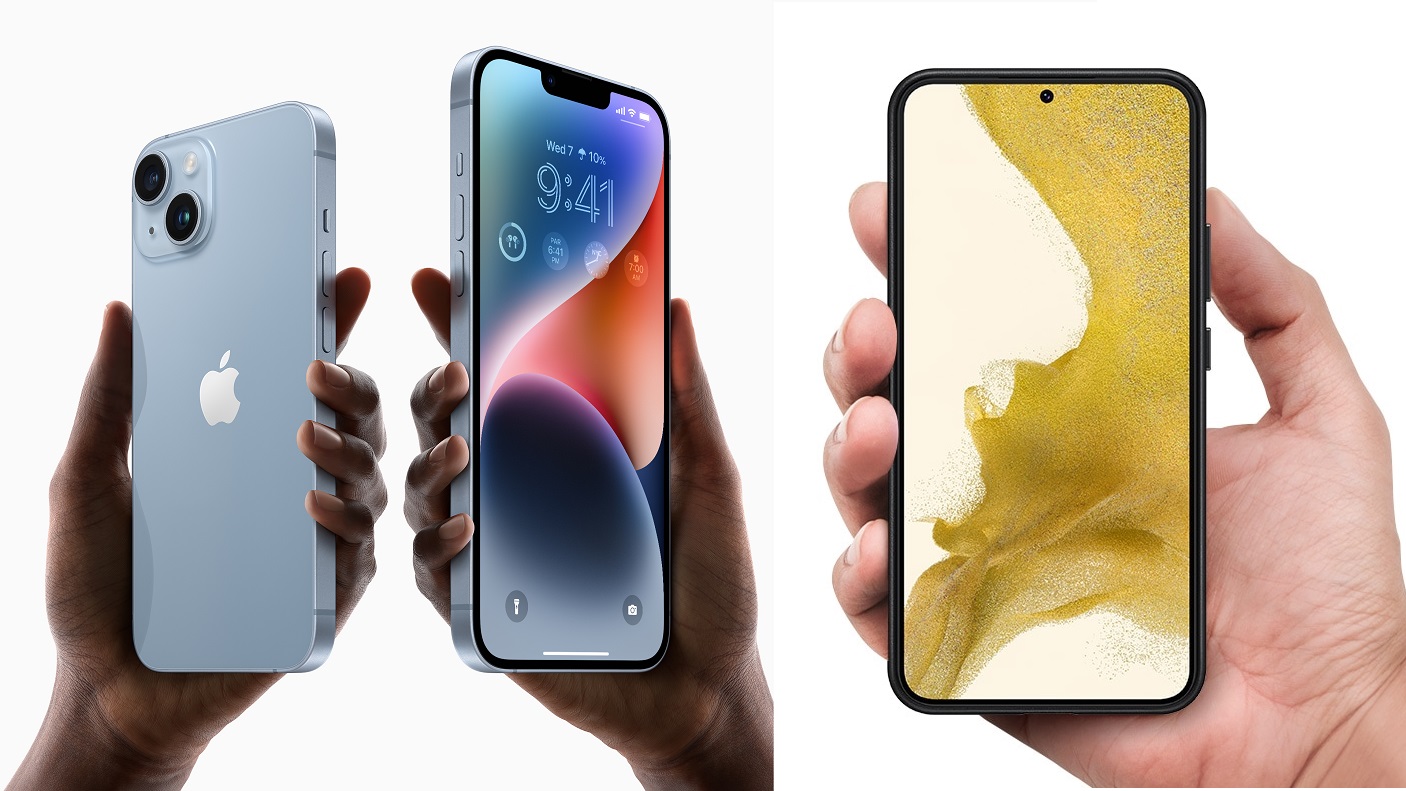
Phone design hasn't changed all that much in recent years, but that's not a bad thing. The looks of a phone are subjective, and it's not possible to declare one of these phones as having the superior design, as both these phones look equally modern. The iPhone 14 keeps the striking good looks of the iPhone 13 on most counts, with flat edges. The Galaxy S22 has slightly more curves but manages to look low-profile and classy.
Glass sandwiches are the norm now, and as such it's no surprise that both these phones have aluminum frames between two pieces of glass. The Galaxy S22 gets Gorilla Glass Victus+ on the front and back which has better scratch resistance than shatter protection, while the iPhone gets Apple's specialized CeramicShield at the front which has better shatter protection. They're both good enough for a modern phone, and durability is pretty much equivalent.
The Samsung Galaxy S22 has the better display by most metrics, including brightness and refresh rate.
The display is a key differentiator for these two phones. While the iPhone 14 and the Samsung S22 both have 6.1-inch displays with a 19.5:9 aspect ratio, the S22 actually wins this out by a fair amount. On the iPhone 14, the Super Retina XDR OLED screen only goes up to 60Hz, and the brightness hits an acceptable 800 nits, and peaks at 1,200 nits. On the other hand, the Dynamic AMOLED 2X on the S22 goes all the way up to 1,300 nits, and the refresh rate goes to 120Hz. The iPhone 14 has slightly better resolution and pixel density, coming in at 460 ppi versus the S22's 425 ppi. Despite that, the S22 has a superior display.
iPhone 14 vs. Galaxy S22 Performance: Apple's last-gen chip is still a winner
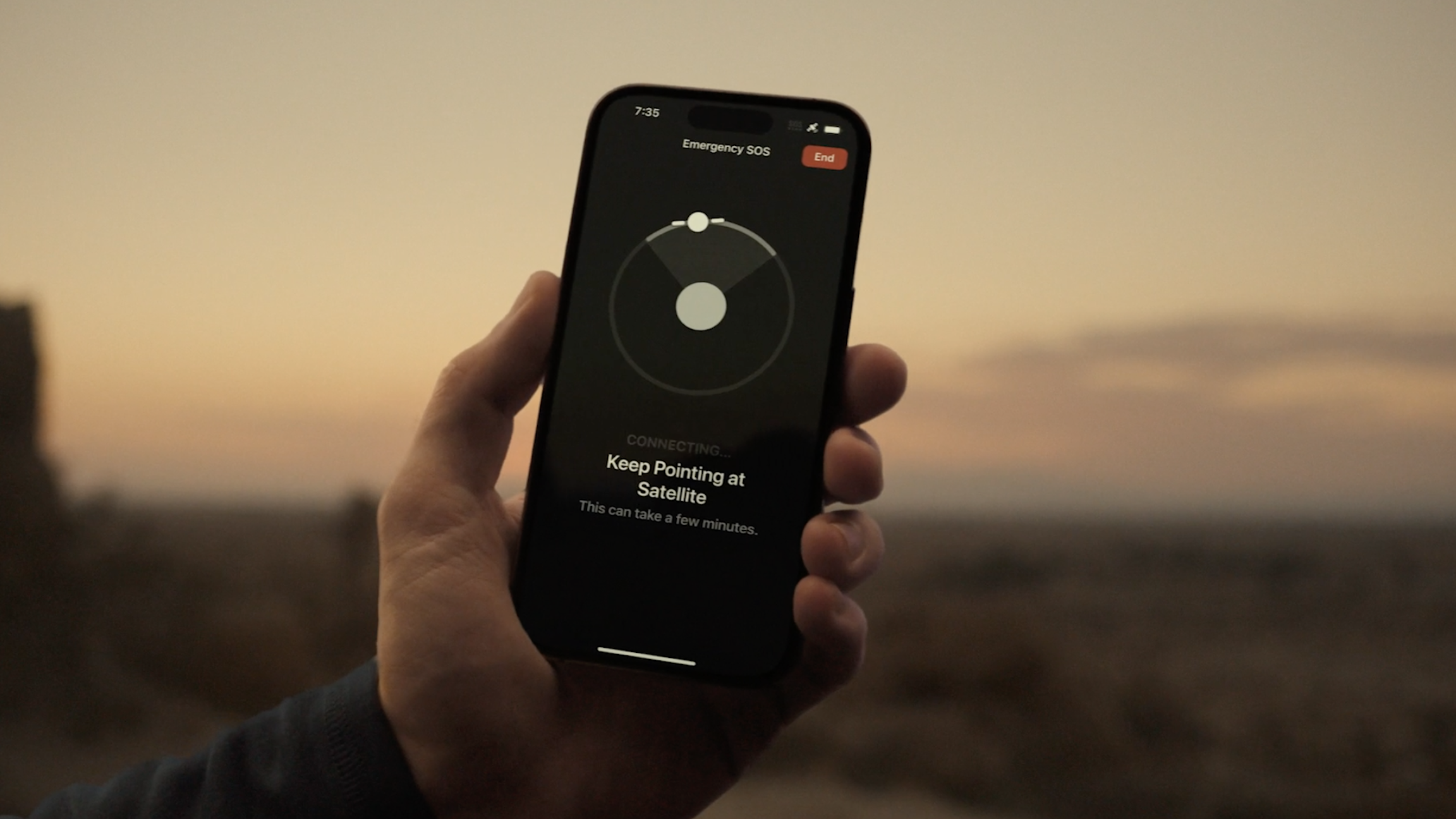
The Apple iPhone 14 is rocking last year's A15 Bionic chipset, except it's the one from the iPhone 13 Pro and not the standard 13. So even though there's a year-old chipset in there, it's the more powerful version of the chip. The iPhone 13 with the A15 Bionic was powerful enough to beat the Galaxy S22 with the Snapdragon 8 Gen 1. The iPhone 14 gains a slight lead in that direction. Snapdragon processors lag behind Apple's chip. Although, while using these phones, it will be hard to tell the difference because both chips are powerful enough. The S22's faster screen refresh rate may make it look faster in some scenarios, while the iPhone 14 has better animations, so it may appear smoother at times.
Both the iPhone 14 and the Galaxy S22 both have last-generation chips. While the A15 Bionic is superior to the Snapdragon 8 Gen 1, it may be hard to differentiate performance in real-world usage.
The iPhone 14 comes in 128GB, 256GB, and 512GB storage capacities. The storage options on the S22 are the same with the notable exception of the 512GB model. Apple does charge a pretty penny for a storage upgrade, but the availability of a 512GB model makes it the better choice if you like to have a lot of local data, like photos, videos, and music, on your phone. Not to forget, the iPhone 14 now packs in emergency SOS satellite communications, which is a great additional feature to have.
With the iPhone 14, Apple is making battery life promises that are higher than the iPhone 13. The video playback figure has gone to 20 hours from the 17 hours of the 13, while the audio playback has gone up from 55 hours to 80 hours. Roughly, it will perform about 15-20% better than the iPhone 13, which already had pretty great battery life. On the other hand, the S22 not only comes with a smaller battery than older Galaxy S models, but the 120Hz screen means your device will be sipping more power if the mode is enabled. The iPhone 14 thus wins out on the battery front.
iPhone 14 vs Galaxy S22: Features and software
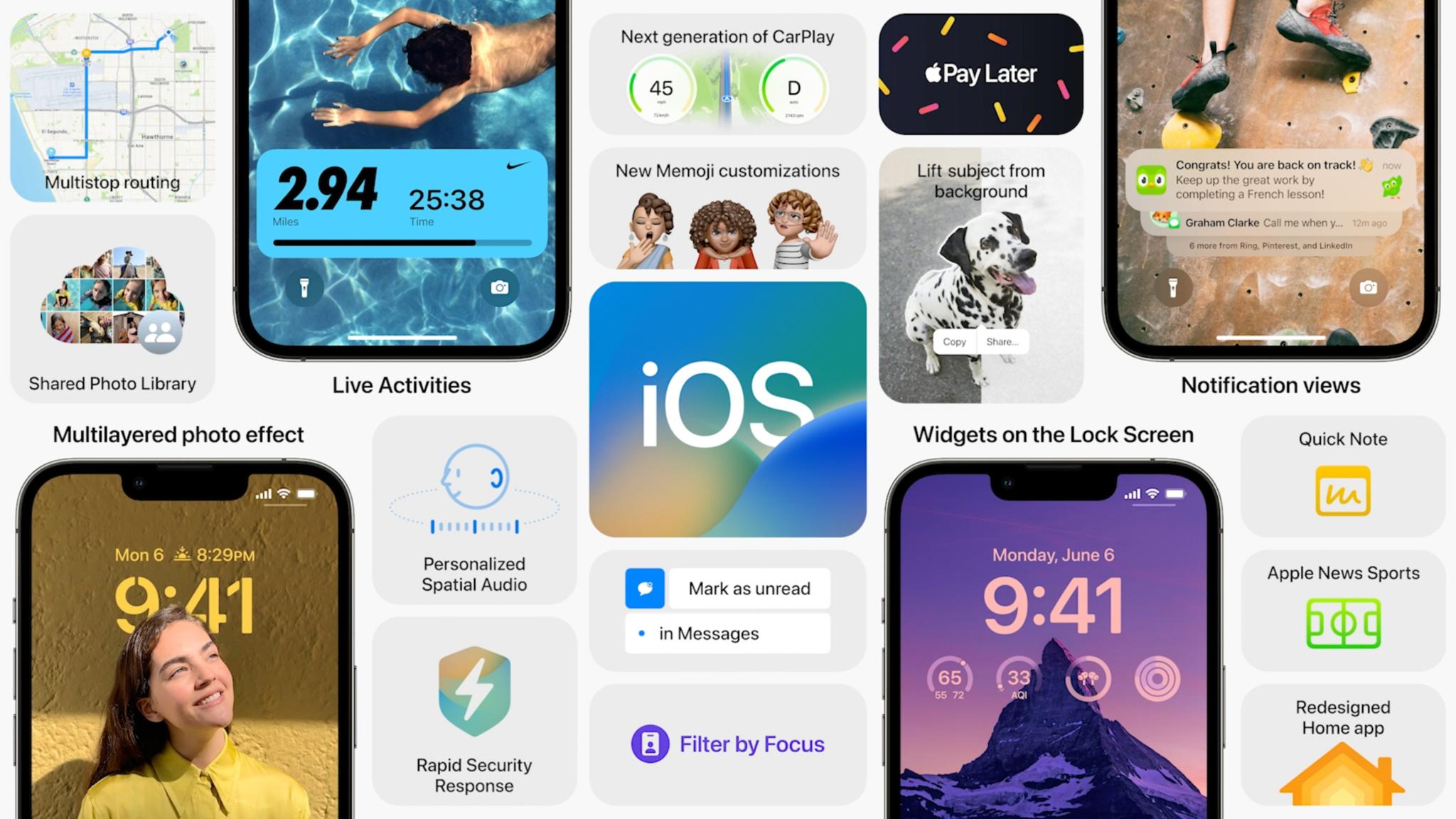
Both Apple and Samsung are good at packing features into their phones. Sure, Android comes with more flexibility, but iOS enjoys better privacy and stability. With the iPhone 14, Apple has added a few features that are not present on the Galaxy S22, or any Android phone right now.
First off is the aforementioned emergency SOS satellite communication capabilities. The iPhone 14 can text emergency services without any cell service or Wi-Fi connectivity, using satellite communication. This is a crucial feature and while you won't use it daily, it's one of those features that's nice to have. This feature may come to Android phones soon, but the Galaxy S22 lacks the hardware, which means it'll never have this feature.
Another iPhone 14 feature you hope to never have to use but will be nice to have is Crash Detection. It can detect car crashes using its sensors and some computational magic, and contact 911 and your emergency contacts right after.
The iPhone 14 can text emergency services without any cell service or Wi-Fi connectivity, using satellite communication.
The new iOS 16 also has a host of added perks, including new customization features like the depth effect on the Lock Screen, as well as Lock Screen widgets, notification improvements, the ability to edit and unsend iMessages, fresh Photos features, and more. This is perhaps the most feature-loaded iOS update of all time, making the iPhone 14 an easier recommendation.
On the other hand, the S22 is currently running Android 12 with One UI 4.1. Android 12 also brought a ton of customization features through Material You, which allows you to customize your phone's looks through color, widget placement, and more. One UI 4.1 is a pretty reliable skin on top of it, with a clean notification design, a fresh widget picker, and the ability to set a custom color for specific notifications, among others. You get the best that Android has to offer, with pretty much everything you can expect from an Android phone at this point. However, with iOS 16, Apple is making an interesting proposition, good enough to tempt the most loyal Android users.
iPhone 14 vs. Galaxy S22 Camera: Apple packs in more computing
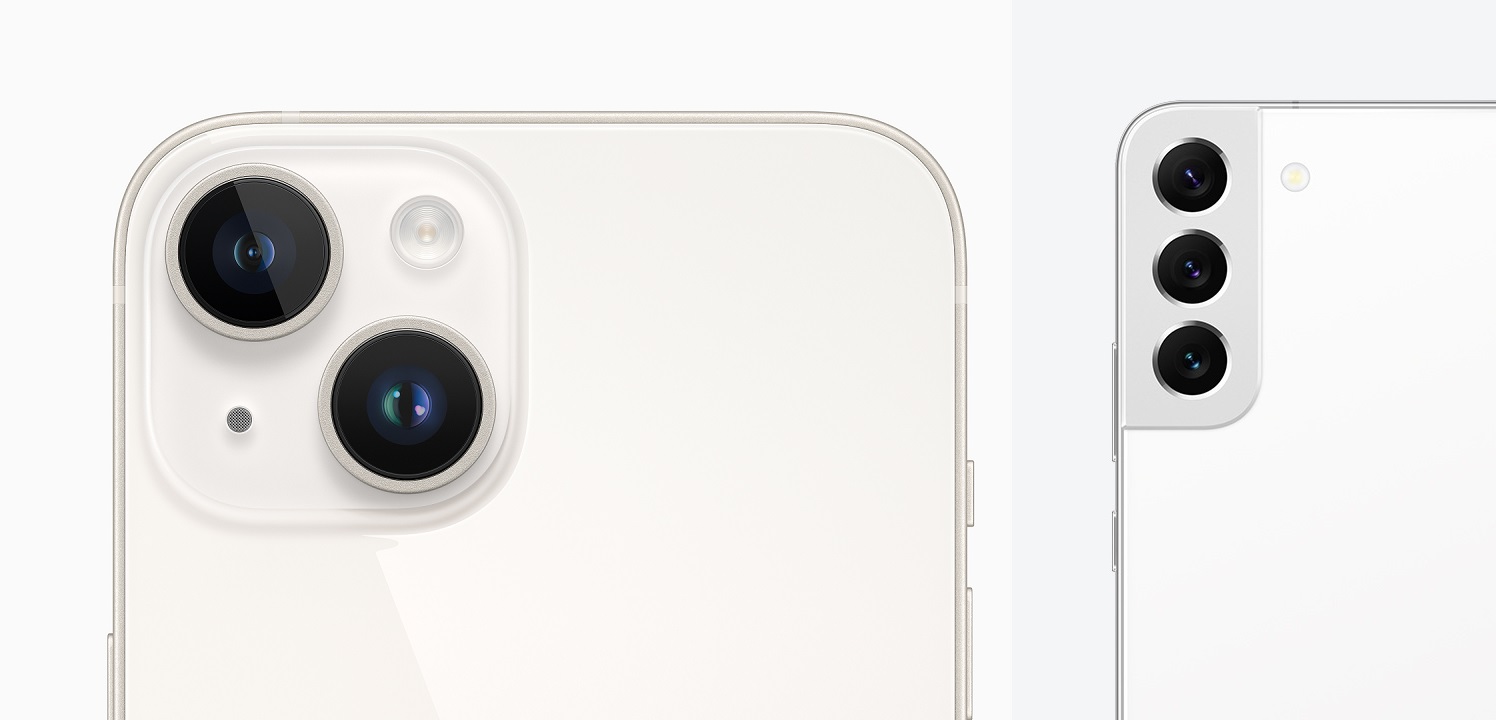
As we mentioned earlier, the Samsung Galaxy S22 has the better camera on paper, sporting a 50MP main camera. On the other hand, the iPhone 14 is rocking a 12MP main camera, but an improved sensor over the last generation iPhone. The S22 also has a 12MP ultrawide, and 10MP telephoto lens, while the iPhone 14 gets only a 12MP ultrawide camera, but doesn't get a telephoto camera.
The S22 has a solid camera setup, producing vivid photos with better resolution thanks to the bigger main camera sensor. However, the iPhone has the advantage of a better sensor than the last-gen iPhone 13, which was beating the S22 already. The S22's bigger sensor didn't quite get the same level of detail or accuracy as the iPhone 13. With the new Photonic Engine and other improvements Apple has made under the hood, in addition to the better hardware, it's unlikely that the S22 will be able to come close to the iPhone 14.
The Galaxy S22 produces higher-resolution images, but the iPhone's color science and detail reproduction are unlikely to be matched.
iPhones have always had a solid advantage over competing phones when it comes to video capabilities, and the iPhone 14 takes it up a notch. The iPhone 13 had one major disadvantage when compared to the Galaxy S22 in video capabilities, and that was the lack of 8K video recording. The iPhone 14 has the same shortcoming. However, if you look at the overall quality of the video, the iPhone 14 is bound to be the better pick. Both phones have automatic framing, so the Galaxy S22 doesn't lag too far behind, especially if the 8K recording is important for your usage.
iPhone 14 vs. Galaxy S22: Which should you buy?
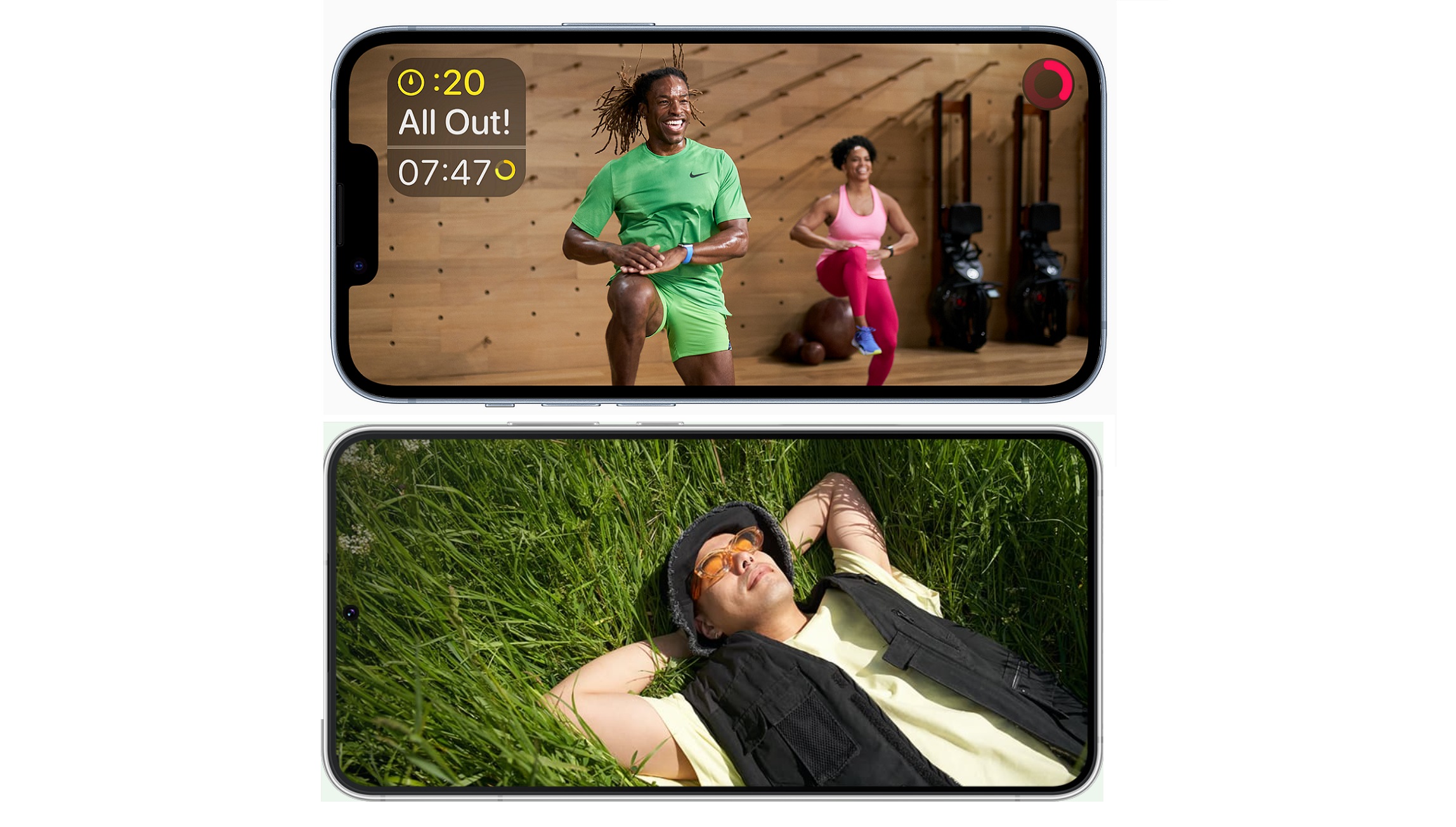
There are a lot of things to consider before making your choice between these two phones. The iPhone 14 has undoubtedly taken the crown of the top iPhone now that it's out, but the Galaxy S22 is a fantastic phone as well. However, they do serve different kinds of uses. The Galaxy S22 is a better phone if you want a brighter display and 8K video recording, and the iPhone 14 is the better choice if you want better photos and battery life.
It also comes down to your choice of the operating system. Android is more open and easier to tinker with, while iOS is generally less buggy, smoother, and has a more coherent user experience. The latter is also great if you have other Apple devices because the interoperability is very smooth, with options for AirPlay, SharePlay, Sidecar, and more.
One thing to remember is that the Galaxy S22 is over half a year old, while the iPhone 14 is just entering the market now. This is something to keep in mind if software support is important to you because even with Samsung's improved update promise for the S22 to provide four years of updates (three and a half now), the iPhone 14 is expected to outlast the S22 in terms of getting the latest software.
The phone's age also factors in the pricing. Both the iPhone 14 and the Galaxy S22 start at $799. However, with the S22 being about half a year old, the price has started dipping to $699, and sometimes even lower. In comparison, the iPhone 14 is expected to stick to the $799 price tag for a good while. So that should also affect your decision since with the holiday season approaching, the S22 could get considerably cheaper than the iPhone 14.
At the end of the day, though, both are excellent smartphones, and you cannot go wrong with either of them. Weigh in your use cases before you make a choice, and you'll be good to go!

The smart pick
Apple's 2022 iPhone keeps last year's chip, and sticks to a modest display, but delivers performance when and where needed.

The powerhouse
Samsung's 2022 base flagship is getting old, but still manages to keep an edge over the latest iPhone with its superior screen and software versatility.
Master your iPhone in minutes
iMore offers spot-on advice and guidance from our team of experts, with decades of Apple device experience to lean on. Learn more with iMore!

Palash has been a technology and entertainment journalist since 2013. Starting with Android news and features, he has also worked as the news head for Wiki of Thrones, and a freelance writer for Windows Central, Observer, MakeUseOf, MySmartPrice, ThinkComputers, and others. He also worked as a writer and journalist for Android Authority, covering computing, before returning to freelancing all over town.
